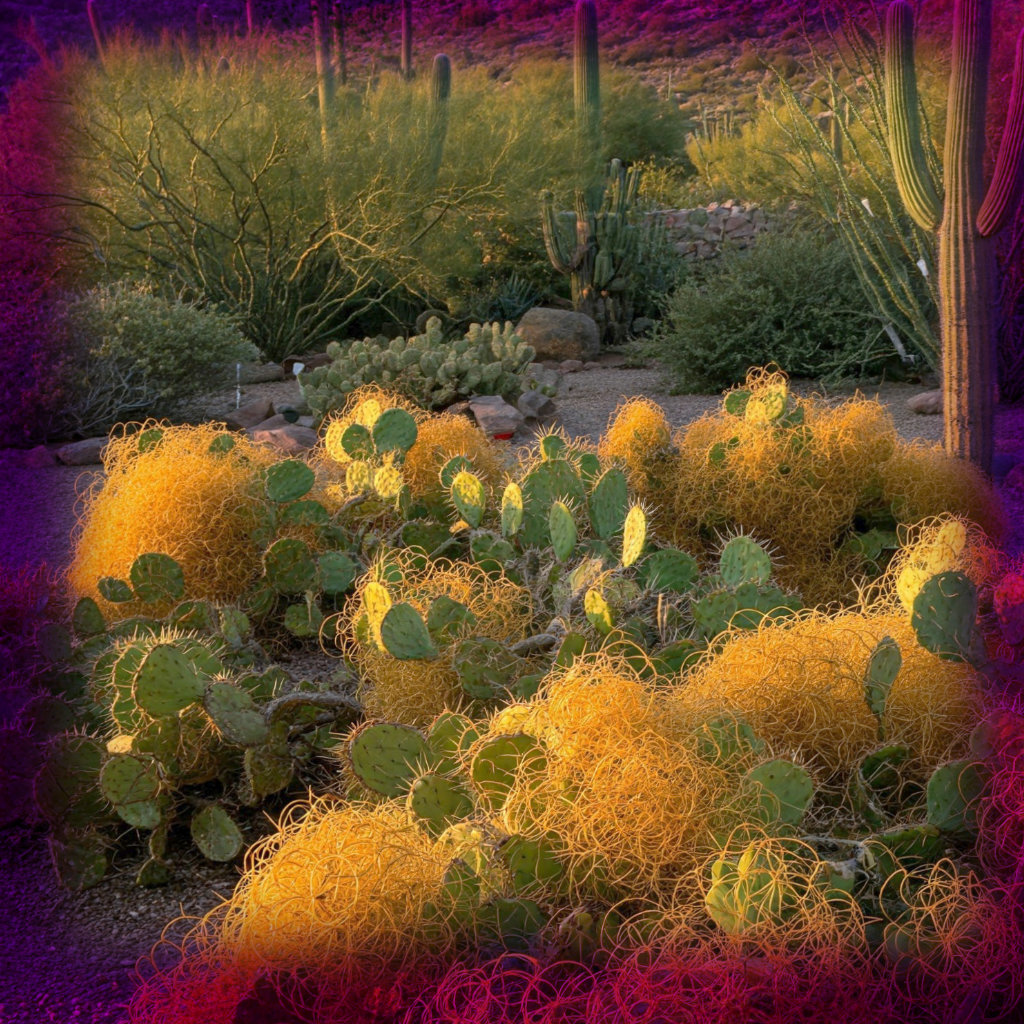The Growing Threat of Invasive Species in Arid Landscapes
Desert gardens face a silent invasion. Non-native plants, often introduced accidentally or for ornamental purposes, are wreaking havoc on fragile ecosystems. These invaders exploit scarce resources, displace native species, and alter habitats irrevocably.
Why Desert Ecosystems Are Particularly Vulnerable
With low rainfall and specialized flora, deserts lack natural defenses against aggressive outsiders. Once established, invasive plants monopolize water, accelerate erosion, and increase fire risks. The slow-growing natives simply can’t compete.
Section 1: Common Desert Garden Invaders
Buffelgrass (Pennisetum ciliare): The Firestarter
Originally imported for cattle forage, this drought-tolerant grass forms dense stands. Its quick ignition and intense heat devastate slow-burning cacti and shrubs.
Fountain Grass (Pennisetum setaceum): Deceptive Beauty
Popular in landscaping, its feathery plumes belie its menace. Wind-dispersed seeds invade washes, crowding out palo verdes and brittlebush.
Sahara Mustard (Brassica tournefortii): The Opportunist
This annual germinates after minimal rain, blanketing dunes. It smothers wildflowers, robbing pollinators of critical early-season nectar.
Russian Thistle (Salsola tragus): Tumbleweed Trouble
More than a movie prop, it hoards soil nutrients and harbors crop pests. A single plant can scatter 250,000 seeds.
Stinknet (Oncosiphon piluliferum): The Stinky Intruder
Its camphor-like odor signals trouble. This noxious weed triggers allergies while forming monocultures in disturbed soils.
Tamarisk (Tamarix spp.): The Water Thief
“Saltcedars” siphon 200 gallons daily, salinizing soil in the process. Their deep roots strangle riparian zones.
Bermuda Grass (Cynodon dactylon): The Relentless Creeper
Though sometimes planted deliberately, its rhizomes invade irrigation lines and choke out native groundcovers.
Red Brome (Bromus rubens): Fueling Wildfires
This annual grass dries into perfect tinder, transforming desert fires from rare to routine.
Section 2: How Invasive Plants Take Over
Rapid Reproduction and Seed Dispersal Tactics
Some species produce seeds within weeks. Others, like tumbleweeds, roll for miles. Stinknet seeds hitchhike on tires and shoes.
Outcompeting Native Plants for Scarce Resources
Deep taproots steal groundwater before it reaches mesquite trees. Allelopathic chemicals suppress nearby germination.
Altering Soil Chemistry to Their Advantage
Tamarisk excretes salt, creating barren zones. Nitrogen-fixers like buffelgrass change nutrient cycles unpredictably.
Disrupting Pollinator and Wildlife Relationships
Monarchs lay eggs on invasive milkweed—a fatal mistake. Seed-eating rodents starve when exotics replace nutritious native seeds.
Section 3: Ecological and Practical Consequences
Increased Wildfire Risks in Dry Climates
Invasive grasses create continuous fuel beds where none existed before. The 2020 Bighorn Fire near Tucson burned over 120,000 acres, fueled primarily by buffelgrass. Native desert plants didn’t evolve with frequent fires and often fail to regenerate.
Water Depletion in Already Arid Regions
A single mature tamarisk can consume up to 300 gallons daily through its extensive root system. In the Colorado River basin, these invaders account for significant water loss in critical watersheds.
Loss of Native Biodiversity
Saguaro recruitment has declined 80% in areas invaded by buffelgrass. Specialized species like the endangered Sonoran pronghorn lose vital forage plants to aggressive invaders.
Economic Costs to Landowners and Municipalities
Phoenix spends $1.2 million annually controlling invasive plants in parks and canals. Property values drop when fire-prone species dominate landscapes.
Section 4: Early Detection and Identification
Key Visual Clues to Spot Invasive Plants
Look for:
- Unusually rapid growth after rains
- Monoculture formation
- Waxy or hairy leaves (drought adaptations)
- Distinctive seed structures like barbed awns
Seasonal Growth Patterns of Common Invaders
Stinknet germinates in winter, while red brome thrives in spring. Fountain grass flowers summer through fall, providing year-round vigilance challenges.
Using Mobile Apps for Plant Identification
iNaturalist and Seek by iNaturalist offer crowdsourced identification. The Southwest Desert Flora app provides region-specific invasive alerts.
When to Consult a Local Extension Office
Contact experts when:
- You find unfamiliar plants spreading aggressively
- Standard removal methods fail
- You suspect herbicide-resistant strains
Section 5: Effective Removal Strategies
Manual Removal: Tools and Techniques
For taprooted species like Sahara mustard:
- Use a narrow trowel or weeding knife
- Remove before seed set
- Work when soil is moist
- Bag and dispose of all plant material
Smothering and Solarization for Small Infestations
Lay 6mm black plastic for 4-6 summer weeks. This kills seeds and roots through heat while preserving soil microbiota.
Targeted Herbicide Use: Pros and Cons
Glyphosate works on actively growing foliage but may require multiple applications. Imazapyr provides longer soil residual but can damage nearby desirable plants.
Biological Control: Introducing Natural Predators
The tamarisk beetle (Diorhabda spp.) has reduced saltcedar infestations by 75% in some areas. However, biocontrol requires rigorous testing to prevent new ecological problems.
Preventing Regrowth: Follow-Up Care
Monitor treated areas for 3-5 years. Reseed with native grasses like blue grama to fill the ecological niche.
Section 6: Prevention and Long-Term Management
Choosing Native and Non-Invasive Alternatives
Replace fountain grass with deer grass (Muhlenbergia rigens). Swap Bermuda grass for native frogfruit (Phyla nodiflora).
Creating Defensible Space Around Property
Maintain 30 feet of cleared space around structures. Use gravel or hardscaping in high-risk zones.
Community Efforts: Organized Eradication Programs
Tucson’s “Buffel Slayer” volunteer corps removes 50+ acres annually. Neighborhood adopt-a-wash programs prevent reinfestation.
Educating Neighbors to Prevent Spread
Host plant swap events featuring natives. Distribute identification guides through HOA newsletters.
Conclusion
The Importance of Vigilance in Desert Landscaping
Early intervention prevents costly large-scale remediation. Regular monitoring stops invaders during vulnerable establishment phases.
How Every Gardener Can Make a Difference
Simple actions matter:
- Remove suspicious plants immediately
- Choose certified weed-free mulch
- Clean tools and shoes after hiking
- Report infestations to local agencies
The battle against invasive species requires persistence, but protecting our unique desert ecosystems makes every effort worthwhile. Stay observant, act quickly, and collaborate with your community for maximum impact.

